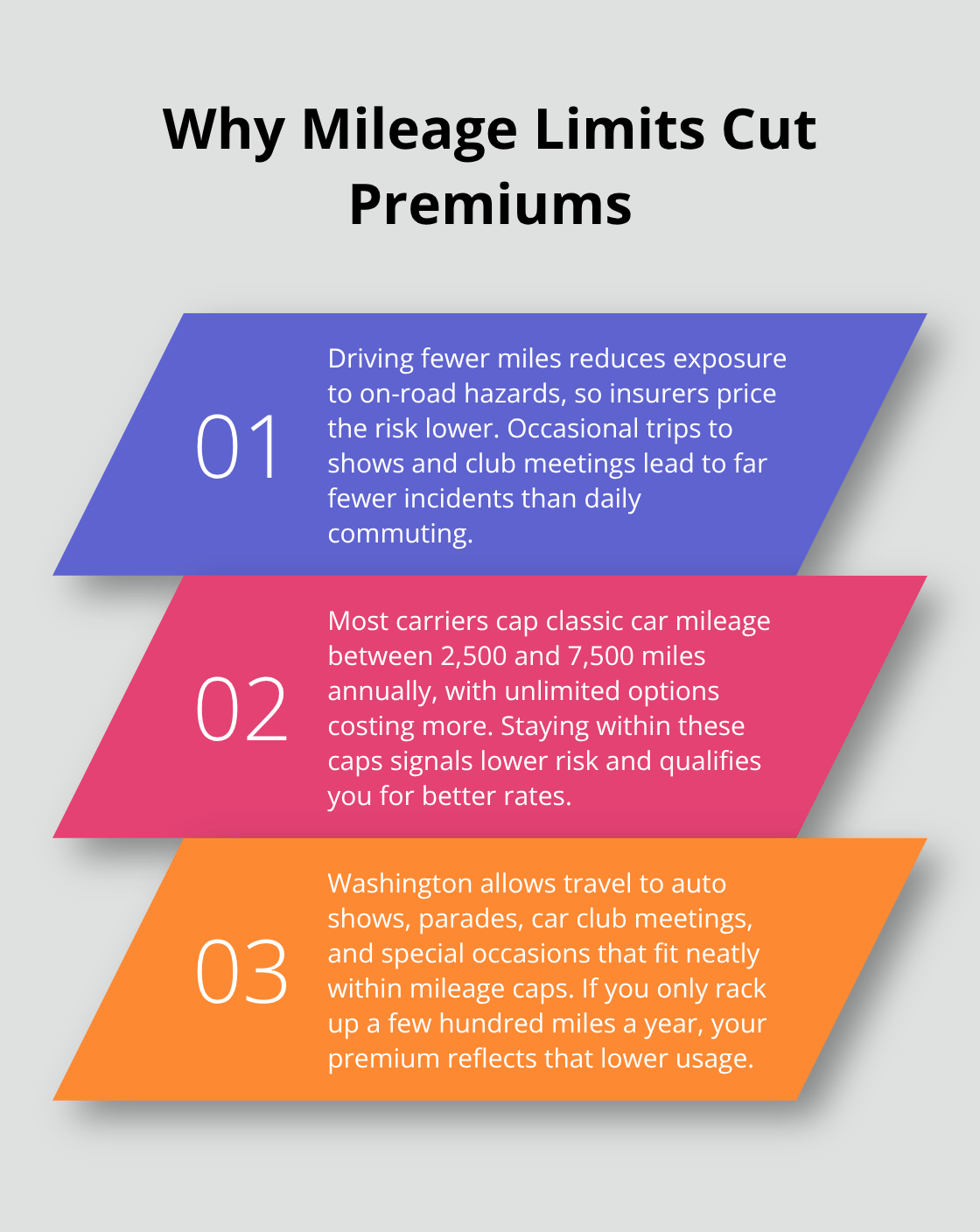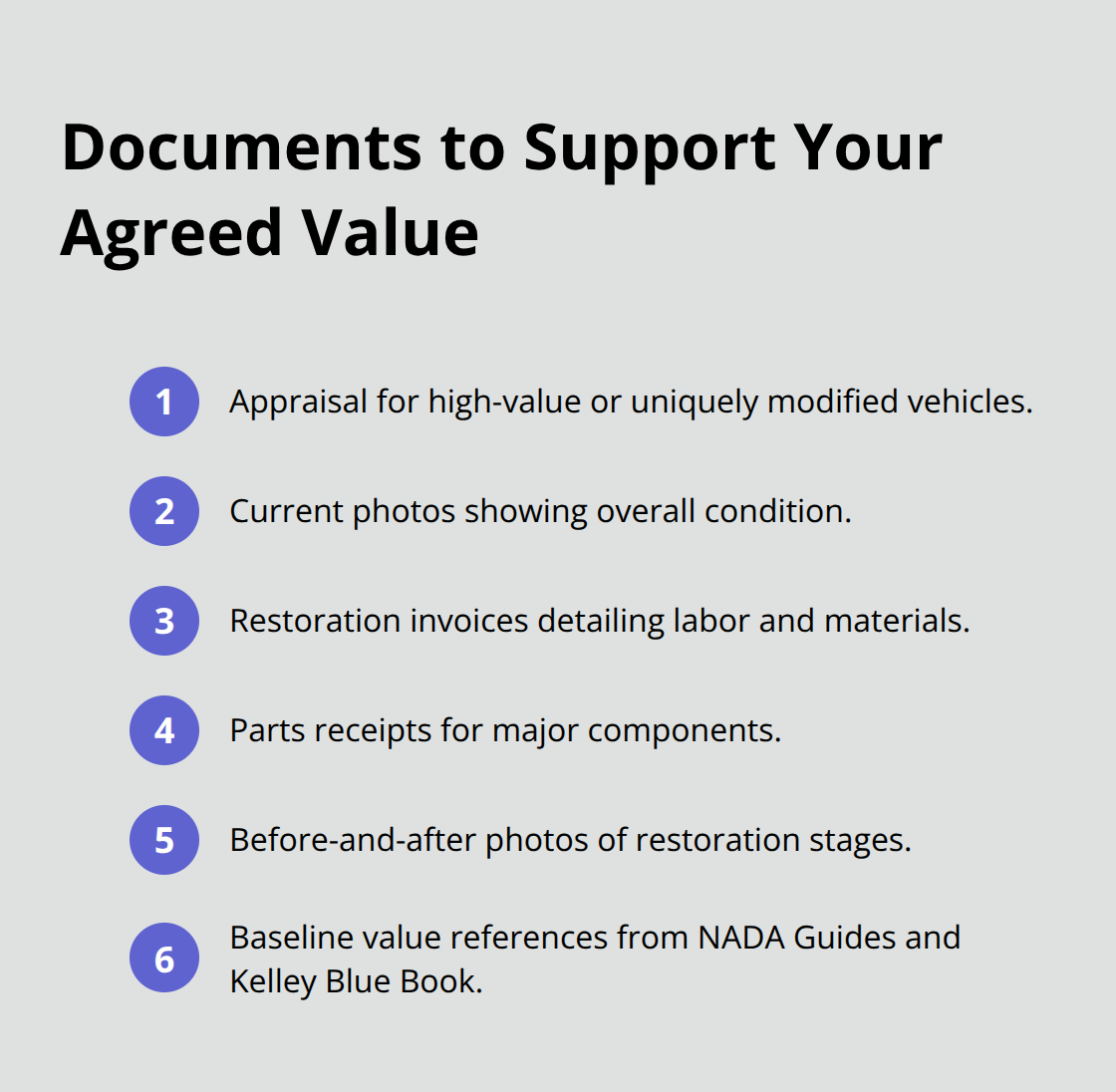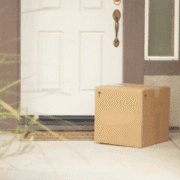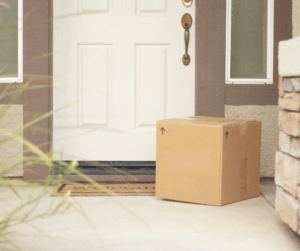Classic Car Insurance Washington: Preserve Your Vintage Ride With The Right Policy
Your classic car is more than transportation-it’s an investment that deserves protection. Classic car insurance in Washington works differently than standard auto policies, with coverage options specifically designed for vintage vehicles.
At H&K Insurance Agency, we help owners navigate these specialized policies to keep their prized possessions safe. The right coverage can make all the difference in protecting your classic ride.
How Classic Car Policies Protect Value Differently
Classic car insurance operates on an entirely different premise than standard auto policies, and understanding this difference matters for protecting your investment. Standard policies use actual cash value, which depreciates your car’s worth every year regardless of condition or market demand. Classic car policies instead use agreed value coverage, meaning you and your insurer set the vehicle’s value upfront and lock it in for the life of the policy. According to the Washington State Department of Licensing, classic cars must be at least 30 years old and owned as collector items rather than daily drivers, which is exactly why insurers offer this specialized approach. This agreed value method protects you from depreciation-if your 1967 Chevrolet appreciates from $45,000 to $55,000 over three years, your coverage grows with it through inflation guard provisions that automatically adjust the agreed value over time.
Why Mileage Limits Lower Your Premiums
Mileage restrictions on classic car policies reflect actual risk and reduce your premiums significantly. Most carriers cap annual mileage between 2,500 and 7,500 miles, with some offering unlimited options at higher costs. Classic cars driven occasionally to car shows and club meetings experience far fewer accidents than daily drivers. Washington allows collector vehicles to travel to auto shows, parades, car club meetings, and special occasions, which fits perfectly within these mileage caps.

If you attend four car shows per year and drive 500 miles total, you’ll pay substantially less than someone claiming unlimited mileage. You avoid subsidizing coverage you don’t need, and insurers reward owners who respect these boundaries with lower rates.
Storage and Condition Requirements Shape Your Coverage
Insurers require documentation of how and where you store your classic car because a vehicle in a climate-controlled garage faces completely different risks than one left exposed. You’ll typically need to show photos, receipts for restoration work, and a detailed timeline of any modifications or upgrades you’ve made. This documentation forms the foundation for determining your actual agreed value. If you’re mid-restoration, some carriers offer temporary restoration or vehicle-under-construction coverage specifically designed for active projects, though you’ll need to demonstrate ongoing work with photos and receipts. The condition of your classic directly affects both your premium and your ability to file successful claims. A car stored properly with maintenance records will command better rates and faster claim resolution than one stored outdoors or in poor condition.
Documentation Determines Your Agreed Value
Your insurer will ask for specific documentation to establish the vehicle’s true market value before you finalize coverage. Reputable sources such as NADA Guides and Kelley Blue Book provide baseline values, but your actual agreed value depends on restoration quality, modifications, and current condition. High-value or uniquely modified cars may require an appraisal, photos, and receipts to support the valuation. You’ll want to gather all documentation of work completed-restoration invoices, parts receipts, and before-and-after photos-to justify your agreed value.

This upfront work prevents disputes later and accelerates claim settlement if you ever need it. The more detailed your documentation, the stronger your position when establishing coverage limits.
Coverage Grows With Your Investment
As you invest in your classic car, your agreed value can increase to reflect those improvements. If you upgrade the interior, restore the engine, or add custom features, you can request higher valuation limits to match the increased value. Inflation guard automatically adjusts your agreed value annually, but major upgrades warrant a policy review and adjustment. This flexibility means your coverage stays aligned with your actual investment rather than falling behind as your car appreciates. The next step involves selecting the specific coverage options that protect your vehicle during its time on Washington roads and at collector events.
What Coverage Do Classic Cars Actually Need
Comprehensive and Collision Protection for Your Vintage Vehicle
Comprehensive and collision coverage protect your classic car from different types of damage, and both matter for vintage vehicles. Comprehensive coverage handles non-driving damage like theft, vandalism, fire, storms, and weather events-risks that increase when your car sits in storage between shows. Collision coverage pays for repairs after an accident regardless of who caused it, which protects you on the drive to car shows and club meetings. Washington State Department of Licensing requires minimum liability of $25,000 per person and $50,000 per accident, but these minimums apply to classic cars just as they do daily drivers.
Your classic car policy should include both comprehensive and collision with low deductibles, typically between $250 and $0, since your agreed value already reflects your vehicle’s worth. Higher deductibles save money on premiums but create real costs when damage occurs to a $50,000 restoration. You’ll want to review your specific car’s value and usage before selecting deductible amounts-a show car driven 500 miles yearly faces different risks than a classic driven regularly.
Liability Coverage Tailored to Your Collector Vehicle
Liability coverage for classic cars works identically to standard policies but deserves careful attention because collector events create unique exposure. If you damage someone else’s property or injure them while driving to a car show, your liability coverage pays their medical bills and property damage up to your policy limits. Most classic car owners assume they’ll drive carefully and avoid accidents, but accidents happen regardless of skill-a distracted driver hitting you at a stoplight doesn’t care about your vintage ride’s value.
You’ll want liability limits higher than Washington’s $25,000 minimum, particularly if your classic has substantial agreed value. The cost difference between minimum coverage and higher limits remains modest, while the protection gap widens significantly. This decision directly affects your financial exposure if you cause serious injury or property damage.
Uninsured and Underinsured Motorist Protection
Uninsured and underinsured motorist protection covers you if another driver causes an accident and either lacks insurance or doesn’t carry enough coverage to pay your damages. These protections matter significantly in Washington, where uninsured driver rates remain substantial and many drivers carry only minimum limits. Your uninsured motorist coverage should match or exceed your liability limits, ensuring you receive protection from drivers who can’t pay for damage they cause.
This coverage protects you and your passengers when the at-fault driver’s insurance falls short (underinsured motorist) or doesn’t exist at all (uninsured motorist). Without adequate uninsured motorist protection, you’d absorb losses that another driver’s negligence caused. To find the right combination of coverage and rates for your specific vehicle, contact a qualified insurance agent who specializes in classic cars and understands your collector’s needs.
Shopping for Classic Car Coverage
Compare quotes across multiple carriers
Multiple quotes from different carriers reveal the true cost of classic car coverage, since premiums vary dramatically based on how each insurer values your vehicle and assesses risk. When you request quotes, provide identical information to each carrier-same agreed value, same mileage estimate, same storage location, same modifications-so you can compare apples to apples rather than making decisions on incomplete data. Some insurers specialize in collector vehicles and price aggressively for well-maintained classics, while others treat them as oddities and charge accordingly. The difference between quotes often ranges from 30 to 50 percent for identical coverage, which means shopping around saves real money.

Insurers weight different factors differently: one carrier might offer aggressive rates for cars stored in climate-controlled garages, while another prioritizes club membership status or driving history. As an independent agency representing multiple top local and national carriers, H&K Insurance Agency compares rates across different insurers and customizes packages so you get the right protection at competitive prices rather than accepting the first quote you receive.
Verify Club Discounts Actually Lower Your Premium
Club memberships and safety features generate genuine discounts that reduce your premiums, but you need to verify these savings actually materialize on your specific policy. Many insurers offer 5 to 15 percent discounts for members of recognized collector car clubs like the Northwest Classic Chevy Club or Ye Olde Car Club, since club members statistically drive more carefully and maintain their vehicles better. Safety features like alarm systems, tracking devices, and secured storage facilities also qualify for discounts because they reduce theft and damage risk.
Before you finalize coverage, request a detailed breakdown of all available discounts and calculate your actual premium after applying them. Some discounts stack while others don’t, and a carrier offering a 10 percent club discount might still charge more overall than a competitor offering 5 percent with lower base rates.
Choose Deductibles Based on Your Financial Capacity
Your deductible choice directly impacts your premium and your out-of-pocket costs when damage occurs. Dropping from a $500 deductible to $250 costs more annually, but on a $50,000 agreed value vehicle, that $250 difference matters significantly if damage occurs. Try selecting deductibles based on your financial capacity to absorb costs, not on what sounds cheap-a $0 deductible on a show car driven 500 miles yearly makes more sense than a $1,000 deductible, since the premium savings won’t offset a single claim.
Final Thoughts
Your classic car represents years of investment, passion, and careful stewardship that standard auto insurance simply cannot protect. Classic car insurance in Washington recognizes that your 1967 Chevrolet or restored pickup truck operates under completely different conditions than a daily commuter, and your coverage must reflect that reality. Agreed value coverage locks in your car’s worth, mileage limits reward careful driving, and documentation requirements establish true value-all features that depreciation-based policies lack.
Don’t settle for the first quote or assume all insurers price classic cars identically, since premium differences often exceed 40 percent for identical coverage. Request detailed breakdowns of available discounts, verify how each carrier calculates agreed value, and confirm mileage limits align with your actual driving patterns. When you invest $50,000 restoring a vintage vehicle, you need coverage that acknowledges that investment rather than treating your car like a depreciating asset.
We at H&K Insurance Agency represent multiple top carriers and compare rates across different insurers to find coverage that matches your specific vehicle and budget. Contact us today to discuss your classic car’s coverage needs and secure a policy that preserves your vintage ride for years of enjoyment ahead. Our team customizes packages so you get the protection your classic deserves at competitive prices.



 As a local insurance agency, we strive to provide answers to all your insurance queries. When it comes to renters insurance, there’s a common misconception that your landlord’s insurance policy will cover any unfortunate incidents that may occur while renting an apartment, home, or condo.
As a local insurance agency, we strive to provide answers to all your insurance queries. When it comes to renters insurance, there’s a common misconception that your landlord’s insurance policy will cover any unfortunate incidents that may occur while renting an apartment, home, or condo.
 The holiday season brings joy, cheer, and a sense of togetherness. Unfortunately, it also attracts increased incidents of theft, making it crucial for individuals to take proactive measures to protect themselves. As you stroll through your neighborhood during this festive time, it’s not uncommon to spot numerous holiday deliveries left unattended on porches, making unsuspecting homeowners vulnerable targets. Safeguarding yourself from holiday theft requires a strong emphasis on prevention. Here are some valuable tips to help you avoid falling victim to theft during this season of giving:
The holiday season brings joy, cheer, and a sense of togetherness. Unfortunately, it also attracts increased incidents of theft, making it crucial for individuals to take proactive measures to protect themselves. As you stroll through your neighborhood during this festive time, it’s not uncommon to spot numerous holiday deliveries left unattended on porches, making unsuspecting homeowners vulnerable targets. Safeguarding yourself from holiday theft requires a strong emphasis on prevention. Here are some valuable tips to help you avoid falling victim to theft during this season of giving: